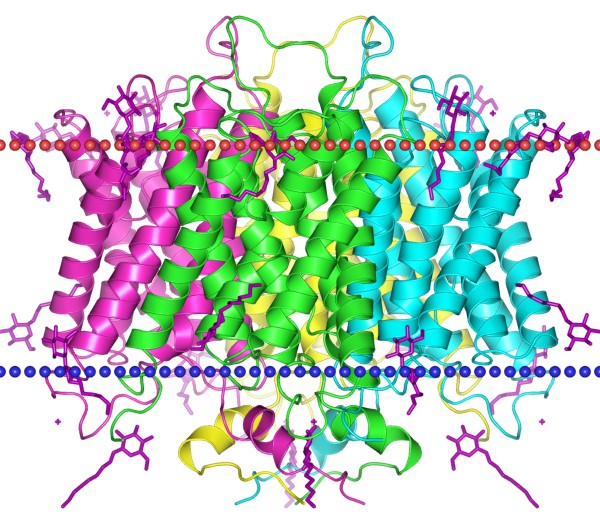Mempro™ Major Intrinsic Protein (MIP)/FNT Superfamily Production Using Virus-Like Particles
Based on the comprehensive membrane protein production platform established through years of experience, scientists from Creative Biostructure can provide unmatched custom Mempro™ major intrinsic protein (MIP)/formate-nitrite transporter (FNT) superfamily production services based on virus-like particles (VLPs) system.
It has well known that the FNT superfamily belongs to the MIP superfamily in the Transport Classification Database (TCDB). Members of MIP superfamily are transmembrane protein channels that possess six transmembrane helices termed TM1-TM6; and two half-helices termed LB and LE, which facilitate water and solute permeability across cell membranes. It is shown that aquaporin (AQP) and aquaglyceroporin channels are the primary members of the MIP superfamily. AQPs are expressed in a wide range of tissues, often spatially located within a certain region of the cell. Members of FNT superfamily can function as channels monovalent anions, and which contain a structural domain termed the aquaporin helical fold. Most members of FNT superfamily can be classified as: formate channels (FocA and FdhC), hydrogen sulphide channels (HSC), and nitrite channels (NirC).

Figure 1. The structural mode of Aquaporin AQY1. (OPM Database)
Virus-like particles (VLPs), are self-assembled multiprotein structures, can simulate the native virus. However, VLPs are non-infectious owing to lack of any viral genetic materials. It is reported that VLPs are obtained from the Hepatitis B virus and consist of the small HBV derived surface antigen (HBsAg). Currently, virus-like particles carrying conformationally-complex membrane proteins (termed lipoparticles) have been used for transmembrane protein production. Lipoparticles can incorporate a wide range of structurally intact membrane proteins, including G protein-coupled receptors (GPCRs), ion channels.
Creative Biostructure provides high quality MIP/FNT superfamily proteins in the stable, highly purified and native-conformation state. Lipoparticles can be produced from bacterial cells, yeast cells, insect cells, plant cells and mammalian cells for MIP/FNT superfamily production. Escherichia coli (E. coli) strains and insect cells are the most commonly used systems for VLPs production. Mammalian cells are also widely employed for VLPs production with the target to construct vaccine candidates. For instance, we can obtain lipoparticles from mammalian cells by co-expressing the retroviral structural core polyprotein, Gag, along with the desired transmembrane protein. Gag core proteins self-assemble at the plasma membrane, where they bud off and capture target membrane proteins. Since the MIP/FNT superfamily proteins within lipoparticles are derived directly from the cell surface without mechanical disruption or detergents, the native structure and orientation of transmembrane proteins are retained.
Creative Biostructure also provides other various Mempro™ membrane protein production services. Please feel free to contact us for a detailed quote.
References:
A. Roldão, et al. (2010). Virus-like particles in vaccine development. Expert Rev. Vaccines, 9(10): 1149-1176.
N. Yan (2015). Structural biology of the major facilitator superfamily transporters. Annu. Rev. Biophys., 44: 257-283.
R. K. Verma, et al. (2015). Major intrinsic protein superfamily: channels with unique structural features and diverse selectivity filters. Methods Enzymol., 557: 485-520.